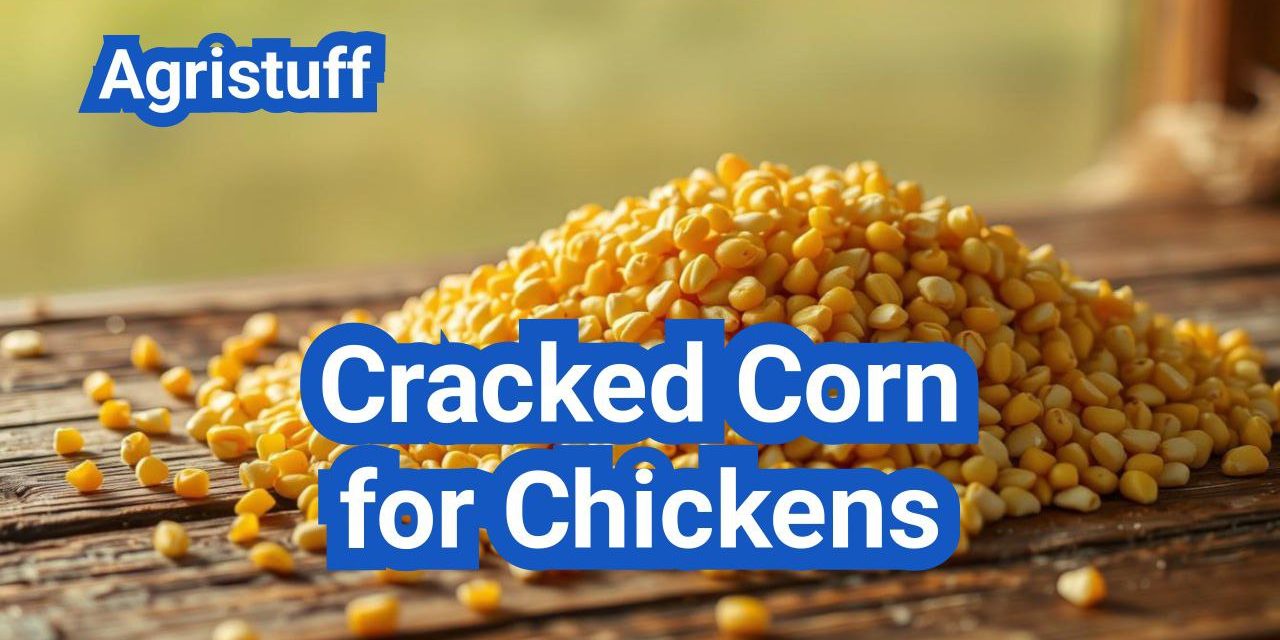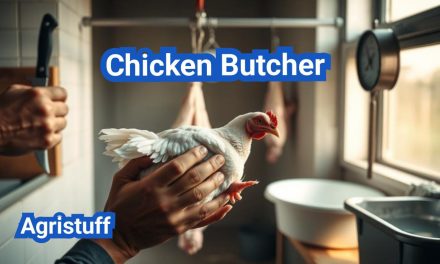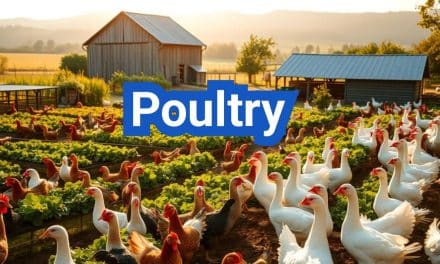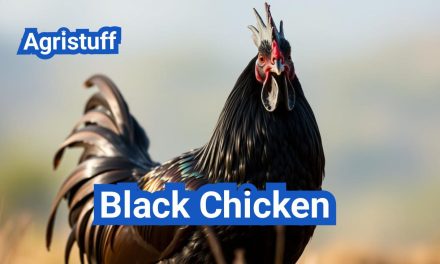Providing cracked corn for chickens can be a valuable addition to their diet, offering essential energy and carbohydrates. As a common feed, it supports their overall health and productivity. However, it’s crucial to understand how to incorporate it effectively into their feeding regimen.
A balanced diet is vital for maintaining healthy chickens, especially laying hens. Cracked corn can be a part of this balance, but it should be complemented with other nutrients to ensure optimal egg production and overall well-being.
Key Takeaways
- Understand the nutritional benefits of cracked corn for chickens.
- Learn how to create a balanced diet for laying hens.
- Discover tips for feeding cracked corn in different seasons.
- Explore comparisons between cracked corn and other feed types.
- Find out how to maintain a balanced diet for optimal egg production.
Understanding Cracked Corn for Chickens
Cracked corn, a common feed for chickens, is made by drying and cracking whole corn kernels. This process not only makes the corn easier to digest for chickens but also provides a cost-effective energy source.
What Is Cracked Corn?
Cracked corn is a type of feed made from dried and cracked corn kernels. The cracking process involves breaking down the whole corn into smaller pieces, making it more accessible for chickens to consume and digest.
How Cracked Corn Is Processed
The processing of cracked corn involves two main steps: drying and cracking. First, whole corn kernels are dried to remove excess moisture, which helps in preserving the corn and preventing mold growth. Then, the dried corn kernels are cracked into smaller pieces. This cracking process is crucial as it makes the corn easier for chickens to eat and digest, ensuring they can derive the maximum nutritional benefit.
Popularity in American Poultry Keeping
Cracked corn has gained popularity among backyard chicken keepers in the USA due to its cost-effectiveness and nutritional value. It serves as an excellent energy source for chickens, supporting their overall health and productivity.
| Benefits of Cracked Corn | Description |
|---|---|
| Cost-Effectiveness | Cracked corn is an economical feed option for chicken keepers. |
| Energy Source | Provides chickens with the energy they need for daily activities. |
| Ease of Digestion | The cracking process makes corn easier for chickens to digest. |
Nutritional Profile of Cracked Corn

The nutritional profile of cracked corn reveals its potential as a valuable feed supplement for chickens. Cracked corn is primarily composed of carbohydrates, making it an excellent energy source.
Caloric Content and Energy Value | cracked corn for chickens
Cracked corn is high in calories, providing a significant amount of energy. This is particularly beneficial during colder months when chickens need extra energy to stay warm. The caloric content of cracked corn is substantial, making it a valuable component of a chicken’s diet, especially in winter.
Protein, Fat, and Carbohydrate Composition | cracked corn for chickens
The nutritional breakdown of cracked corn includes a moderate amount of protein and fat, but it is predominantly carbohydrates. This composition makes cracked corn an effective energy source. However, it’s worth noting that cracked corn is not a complete feed due to its limited protein and fat content compared to other nutritional needs of chickens.
The carbohydrate composition is primarily starch, which is easily digestible by chickens, providing them with the energy they need for daily activities and egg production.
Vitamin and Mineral Content | cracked corn for chickens
While cracked corn is not particularly rich in vitamins and minerals, it does contain some essential nutrients. It is a good source of certain B vitamins and contains minerals like phosphorus. However, to ensure a balanced diet, chickens require additional sources of vitamins and minerals beyond what cracked corn provides.
In summary, cracked corn is a valuable energy source for chickens due to its high carbohydrate content. While it lacks a complete profile of vitamins and minerals, it can be a beneficial supplement to a well-rounded diet.
Benefits of Feeding Cracked Corn to Chickens
The benefits of feeding cracked corn to chickens are multifaceted, ranging from energy provision to enhancing egg yolk color. Cracked corn is a valuable resource for backyard chicken keepers, offering a cost-effective and nutritious feed option.
Energy Source for Poultry | cracked corn for chickens
Cracked corn serves as an excellent energy source for chickens. It is rich in carbohydrates, which are easily digestible, providing chickens with the energy they need for daily activities and maintaining body temperature, especially during cold weather.
Cracked corn is a readily available energy source that helps keep chickens active and warm. This is particularly important for chickens in colder climates where they need to expend more energy to stay warm.
Cost-Effectiveness as Feed | cracked corn for chickens
One of the significant advantages of cracked corn is its cost-effectiveness. Compared to other feed options, cracked corn is relatively inexpensive, making it an attractive choice for many backyard chicken keepers.
| Feed Type | Cost per Pound | Nutritional Value |
|---|---|---|
| Cracked Corn | $0.25 | High in Carbohydrates |
| Layer Feed | $0.50 | Balanced Nutrients |
| Scratch Grains | $0.30 | Varied Nutrients |
Palatability and Chicken Preference
Chickens generally find cracked corn highly palatable. Feeding cracked corn can encourage foraging behavior, which is essential for the mental and physical health of chickens.
“Chickens love cracked corn, and it’s a great way to encourage them to forage and exercise.” – Backyard Chicken Keeper
Impact on Egg Yolk Color | cracked corn for chickens
The xanthophylls present in cracked corn can contribute to a richer, more vibrant yolk color in eggs. This is because xanthophylls are pigments that are deposited into the egg yolks, enhancing their color.
Feeding cracked corn as part of a balanced diet can result in eggs with more appealing yolk colors, which many consumers find desirable.
Potential Drawbacks of Cracked Corn
While cracked corn is a popular feed choice for chickens, it has several drawbacks that poultry keepers should be aware of. One of the primary concerns is its nutritional profile and how it fits into a balanced diet.
Nutritional Limitations | cracked corn for chickens
Cracked corn is known for being high in carbohydrates, which can provide energy for chickens. However, it lacks essential proteins, vitamins, and minerals necessary for overall health. Feeding cracked corn as the sole component of a chicken’s diet can lead to nutritional deficiencies.
- Low in protein: Chickens require a diet rich in protein for optimal health.
- Lacking in vitamins and minerals: Essential nutrients like vitamin D and calcium are crucial for egg production and overall health.
To mitigate these nutritional limitations, it’s essential to supplement cracked corn with other nutrient-rich feeds. A balanced diet that includes a variety of grains, proteins, and vitamins can help ensure the health and productivity of your flock.
Concerns About Overfeeding | cracked corn for chickens
Overfeeding cracked corn can lead to several health issues in chickens, including obesity and related problems. Monitoring the amount of cracked corn fed to chickens is crucial to prevent overfeeding.
- Obesity: Excessive corn consumption can lead to obesity, which can reduce egg production and overall health.
- Nutritional imbalances: Overfeeding cracked corn can result in an imbalanced diet, lacking in essential nutrients.
When to Avoid Feeding Corn | cracked corn for chickens
There are specific situations when it’s advisable to limit or avoid feeding cracked corn to chickens. For instance, during certain stages of their life cycle or under specific health conditions.
- Young chicks: Chicks require a diet rich in protein for growth, making cracked corn less suitable as a primary feed.
- Laying hens: Hens that are actively laying eggs require a diet rich in calcium to support eggshell production.
By understanding the potential drawbacks of cracked corn and how to manage them, poultry keepers can make informed decisions about its use in their chicken’s diet.
Cracked Corn vs. Whole Corn for Chickens

Cracked corn and whole corn are both popular options for chicken feed, but they have distinct differences in terms of digestibility and nutritional value. Understanding these differences is crucial for chicken owners to make informed decisions about their flock’s diet.
Digestibility Comparison | cracked corn for chickens
Cracked corn is generally easier for chickens to digest than whole corn, particularly for younger or smaller birds. The cracking process breaks down the corn kernels into smaller pieces, making it simpler for chickens to access the nutrients. In contrast, whole corn kernels are larger and may be more challenging for younger chickens to eat and digest.
Digestibility Comparison Table
| Characteristics | Cracked Corn | Whole Corn |
|---|---|---|
| Digestibility | Easy to digest | More challenging to digest |
| Suitable for | Younger or smaller chickens | Older, larger chickens |
Nutritional Differences | cracked corn for chickens
While both cracked corn and whole corn are primarily composed of carbohydrates, there are some nutritional differences to consider. Cracked corn and whole corn have similar nutritional profiles since the cracking process doesn’t significantly alter the nutrient content. However, the ease of digestion can affect how efficiently chickens can utilize these nutrients.
Age-Appropriate Considerations | cracked corn for chickens
The choice between cracked corn and whole corn may depend on the age and size of the chickens. For younger chickens, cracked corn is often a better option due to its ease of digestion. As chickens grow older and larger, they can handle whole corn kernels more effectively. Additionally, whole corn encourages natural foraging behavior, which can be beneficial for the overall health and well-being of the flock.
In conclusion, both cracked corn and whole corn have their place in a chicken’s diet, depending on the age, size, and nutritional needs of the flock. By understanding the differences between these two types of corn, chicken owners can make more informed decisions about their feeding practices.
Corn vs. Scratch Grains: What’s Best for Your Flock?
Corn and scratch grains are both popular choices for chicken feed, but they serve different purposes in your flock’s diet. Understanding their differences is key to making informed decisions about what to feed your chickens.
Composition Differences | cracked corn for chickens
Corn is primarily a single ingredient, high in carbohydrates and energy. Scratch grains, on the other hand, are a mixture of various grains such as oats, wheat, and sometimes corn. This mixture provides a more varied diet for chickens.
Key components of scratch grains:
- Oats
- Wheat
- Barley
- Sometimes corn or other grains
The varied composition of scratch grains can encourage foraging behavior in chickens, keeping them active and engaged.
When to Use Each Type | cracked corn for chickens
Corn is particularly useful during colder months when chickens need extra energy to stay warm. Scratch grains can be used year-round to provide dietary variety and encourage natural foraging behaviors.
Consider the following when deciding between corn and scratch grains:
- The age and health of your chickens
- The season and how it affects their energy needs
- The desire to encourage foraging behavior
Combining Corn and Scratch Grains | cracked corn for chickens
Combining corn with scratch grains can create a more varied and engaging diet for your chickens. This approach allows you to leverage the high energy content of corn while providing the benefits of a mixed grain diet.
By mixing corn with scratch grains, you can create a feed that is both nutritious and engaging for your flock, supporting their overall health and well-being.
Seasonal Feeding: Cracked Corn for Chickens in Summer

Feeding cracked corn to chickens during the summer months requires careful consideration of their energy needs and heat stress risks. As temperatures rise, the high energy content of cracked corn must be balanced against the potential for exacerbating heat stress in chickens.
Summer Feeding Considerations | cracked corn for chickens
During summer, chickens may require less energy due to reduced activity and the warmth of the environment. However, cracked corn remains a valuable energy source. It’s essential to monitor the flock’s overall diet and adjust the amount of cracked corn accordingly.
Key considerations include:
- The ambient temperature and its impact on chicken activity
- The overall composition of the flock’s diet
- The chickens’ individual energy needs
Balancing Heat and Energy Needs | cracked corn for chickens
To balance the energy provided by cracked corn with the risk of heat stress, chicken keepers should consider the following strategies:
- Provide cracked corn during the cooler parts of the day.
- Ensure access to plenty of fresh water to help chickens regulate their body temperature.
- Monitor the flock’s health and adjust feeding practices as needed.
Hydration and Corn Consumption | cracked corn for chickens
Ensuring adequate hydration is crucial when feeding cracked corn, especially in summer. Chickens consuming cracked corn need access to plenty of fresh water to digest the feed properly and maintain their body temperature.
Tips for promoting hydration include:
- Providing multiple water sources
- Keeping water cool and fresh
- Monitoring water intake, especially on hot days
Seasonal Feeding: Cracked Corn for Chickens in Winter

Cracked corn is particularly beneficial for chickens during the winter months due to its high energy content. As temperatures drop, chickens require more calories to maintain their body heat and stay warm.
Winter Energy Requirements | cracked corn for chickens
During winter, chickens have higher energy requirements to keep warm. Cracked corn, rich in carbohydrates, serves as an excellent energy source. It helps in generating body heat, which is crucial for chickens to survive the cold weather.
Key Factors Influencing Winter Energy Needs:
- Severity of cold weather
- Age and size of the chickens
- Quality of shelter and insulation
How Corn Helps Chickens Stay Warm
Cracked corn is easily digestible and provides a quick source of energy. When chickens consume cracked corn, it helps in producing body heat, keeping them warm. This is especially important for maintaining their overall health and productivity during the cold winter months.
The process involves the conversion of the corn’s carbohydrates into energy, which is then used by the chicken’s body to maintain its temperature.
Optimal Winter Feeding Amounts | cracked corn for chickens
Determining the optimal amount of cracked corn to feed chickens in winter depends on several factors, including the size and age of the chickens, as well as the severity of the cold weather. A general guideline is to increase the proportion of cracked corn in their diet during extremely cold periods.
| Chicken Age | Recommended Cracked Corn Percentage |
|---|---|
| Laying Hens | 10-15% |
| Young Chickens | 5-10% |
It’s essential to balance cracked corn with other nutritional elements to ensure a well-rounded diet. Consulting with a poultry nutrition expert can provide more tailored advice.
Creating a Balanced Diet with Cracked Corn

To ensure optimal egg production, it’s essential to create a balanced diet that incorporates cracked corn effectively. A well-balanced diet for laying hens must include a mix of protein, calcium, and other necessary nutrients, with cracked corn serving as a supplementary energy source.
Layer Feed Requirements | cracked corn for chickens
Laying hens have specific nutritional requirements to maintain optimal egg production. A balanced layer feed should contain around 16-18% protein, which is crucial for the development of the egg and the overall health of the hen. Calcium is another critical component, necessary for strong eggshell production. A deficiency in calcium can lead to weak or thin-shelled eggs.
In addition to protein and calcium, layer feed should be rich in vitamins and minerals such as vitamin D, which aids in calcium absorption, and phosphorus, which plays a role in the formation of strong bones.
Integrating Cracked Corn into a Complete Diet
Cracked corn can be a valuable addition to a layer’s diet, providing a boost of energy. However, it’s crucial to integrate it correctly to maintain a balanced diet. Cracked corn should not make up more than 10% of the total diet, as it lacks the necessary protein and other nutrients that laying hens require.
When mixing cracked corn with other feed components, ensure that the overall diet remains balanced. For instance, if you’re providing a commercial layer feed that contains 16% protein, you can supplement with cracked corn as a treat, but be sure to limit the amount to avoid nutritional imbalances.
Supporting Optimal Egg Production | cracked corn for chickens
To support optimal egg production, it’s vital to ensure that the diet is not only balanced but also consistent. Providing a consistent feeding schedule helps in maintaining the health of the hens and the quality of the eggs.
Furthermore, ensuring access to fresh water at all times is crucial, as hydration plays a significant role in egg production. A diet that includes appropriately integrated cracked corn, along with a balanced layer feed and fresh water, will support the hens’ overall health and productivity.
“The key to successful egg production lies in a balanced diet, consistent feeding practices, and ensuring the overall health and well-being of the laying hens.”
— Poultry Nutrition Expert
In conclusion, creating a balanced diet with cracked corn for laying hens requires careful consideration of their nutritional needs. By understanding layer feed requirements, integrating cracked corn appropriately, and maintaining a consistent feeding schedule, you can support optimal egg production and ensure the health of your flock.
Best Treats for Laying Hens

The right treats can significantly impact the health and egg production of laying hens. While their main diet should consist of layer feed, treats can provide essential nutrients, encourage foraging behavior, and strengthen the bond between hens and their keepers.
Cracked Corn as a Treat Option | cracked corn for chickens
Cracked corn is a popular treat among backyard chicken keepers. It is high in carbohydrates, providing energy for the hens. However, it should be given in moderation due to its low protein and nutrient content compared to other treats. Limiting cracked corn to no more than 10% of their daily diet is a good rule of thumb to avoid nutritional imbalances.
Other Nutritious Treat Alternatives | cracked corn for chickens
Besides cracked corn, there are numerous other nutritious treat options for laying hens. These include:
- Fruits like apples and berries, rich in vitamins and antioxidants.
- Leafy greens such as kale and spinach, which are packed with calcium and other minerals.
- Mealworms, a high-protein treat that can support feather health and egg production.
- Sunflower seeds, which are rich in healthy fats and protein.
These treats not only provide variety in the hens’ diet but also offer essential nutrients that can enhance their overall health.
Treats That Boost Egg Production | cracked corn for chickens
Certain treats can specifically support egg production by providing necessary nutrients. For example:
- Calcium-rich treats like crushed oyster shells or dark leafy greens can support strong eggshell production.
- Protein-rich treats such as mealworms or black soldier fly larvae can help maintain high egg production levels.
- Omega-3 fatty acid-rich treats like flaxseeds can enhance the nutritional profile of the eggs.
By incorporating these treats into their diet, keepers can help ensure their laying hens remain healthy and productive.
Feeding Schedules for Backyard Chickens

A well-planned feeding schedule is essential for maintaining the overall well-being of your flock. Consistency in feeding times helps regulate the chickens’ digestive system and ensures they receive the necessary nutrients for optimal health and productivity.
Daily Feeding Routines | cracked corn for chickens
Establishing a daily feeding routine is crucial for backyard chickens. It’s recommended to feed chickens twice a day, once in the morning and once in the evening. This schedule aligns with their natural foraging behaviors and helps maintain their energy levels throughout the day.
Morning Feeding: Provide a nutrient-rich feed that meets their daily nutritional requirements. This could be a layer feed or a starter/grower feed, depending on the age and purpose of the chickens.
Evening Feeding: Offer a lighter meal in the evening to help them prepare for the night. Cracked corn can be a good option as it’s easily digestible and provides energy.
Treat Timing and Frequency | cracked corn for chickens
Treats can be a great way to supplement your chickens’ diet and provide variety. However, it’s essential to limit the frequency and amount of treats to avoid overfeeding.
- Offer treats in moderation, ideally not more than 10% of their daily calorie intake.
- Choose healthy treat options like fruits, vegetables, and mealworms.
- Avoid giving treats too close to meal times to prevent reducing their appetite for nutrient-rich feed.
Seasonal Adjustments | cracked corn for chickens
Seasonal changes can impact your chickens’ nutritional needs. Adjusting their feeding schedule accordingly can help ensure they remain healthy and productive.
| Season | Nutritional Needs | Feeding Adjustments |
|---|---|---|
| Summer | Higher energy needs due to heat stress | Increase hydration, consider adding electrolytes |
| Winter | Higher energy needs to stay warm | Increase calorie intake with energy-rich feeds like cracked corn |
By adjusting the feeding schedule according to seasonal changes, you can help your chickens stay healthy and thrive throughout the year.
How Much Cracked Corn to Feed Chickens

Determining the right amount of cracked corn for your chickens is crucial for their health and productivity. The amount of cracked corn to feed chickens depends on several factors, including their age, size, and production level.
Portion Guidelines by Chicken Age | cracked corn for chickens
Chickens at different stages of their lives have varying nutritional needs. For instance, chicks require a starter feed that is rich in protein until they are about 16 weeks old. After this period, you can start introducing cracked corn as a treat.
For laying hens, cracked corn can be given in moderation, typically around 1-2% of their total daily diet. For example, if a laying hen consumes about 4 ounces of feed per day, you can give them about 0.04 to 0.08 ounces of cracked corn.
Treats Percentage Rule (90/10 Rule) | cracked corn for chickens
The 90/10 rule is a simple guideline to follow when feeding treats like cracked corn to your chickens. It suggests that 90% of their diet should come from a balanced commercial feed, while the remaining 10% can be treats. This rule helps prevent overfeeding and ensures that your chickens get the nutrients they need.
Signs of Overfeeding | cracked corn for chickens
Overfeeding cracked corn can lead to obesity and other health issues in chickens. Some signs of overfeeding include weight gain, lethargy, and a decrease in egg production. If you notice any of these signs, it’s essential to adjust the amount of cracked corn you’re feeding them.
Monitoring your chickens’ health and adjusting their diet accordingly is crucial. By following the 90/10 rule and being mindful of the portion guidelines based on age, you can ensure that your chickens remain healthy and productive.
Complementary Supplements to Cracked Corn

To ensure the health and productivity of your flock, it’s crucial to provide complementary supplements alongside cracked corn. While cracked corn is a valuable energy source, chickens also require additional nutrients to maintain their overall well-being.
Grit vs. Oyster Shell: What’s the Difference?
Grit and oyster shell are two essential supplements that serve different purposes in a chicken’s diet. Grit, which is made up of small, hard particles like stone or gravel, aids in the digestion of grains by helping to grind food in the gizzard. Oyster shell, on the other hand, is a source of calcium, crucial for the production of strong eggshells.
Grit is particularly important for chickens that are fed a diet rich in grains, as it helps to break down the food in the gizzard, improving nutrient absorption. Oyster shell is vital for laying hens, as it provides the necessary calcium to produce strong, healthy eggshells.
| Supplement | Purpose | Benefit |
|---|---|---|
| Grit | Aids in digestion | Improves nutrient absorption |
| Oyster Shell | Provides calcium | Supports strong eggshell production |
When to Provide Each Supplement | cracked corn for chickens
The decision to provide grit or oyster shell depends on the chickens’ needs. For example, grit is essential for chickens of all ages to aid in digestion, while oyster shell is particularly important for laying hens to support eggshell production.
It’s recommended to provide grit free-choice, allowing chickens to eat it as needed. Oyster shell should be offered free-choice as well, especially during peak egg production periods.
Other Beneficial Supplements | cracked corn for chickens
In addition to grit and oyster shell, other supplements can benefit chickens fed cracked corn. These include probiotics to support gut health, omega-3 fatty acids to enhance egg nutrition, and vitamins and minerals to fill any nutritional gaps.
When choosing supplements, it’s essential to consider the specific needs of your flock and consult with a poultry nutritionist or veterinarian to determine the best supplements for your chickens.
Safe Storage of Cracked Corn and Poultry Feed
Effective storage practices are vital for preserving the quality of cracked corn used in chicken feed. Proper storage not only maintains the nutritional value of the feed but also prevents contamination and spoilage.
Container Recommendations | cracked corn for chickens
To store cracked corn and other poultry feed safely, it’s recommended to use airtight containers. These can be made of plastic or metal, with a secure lid to prevent moisture and pests from entering. The containers should be clean, dry, and free from any residual odors before filling.
Location and Environmental Considerations | cracked corn for chickens
The storage location should be cool, dry, and well-ventilated. Avoid areas prone to moisture, direct sunlight, or flooding. The ideal storage area maintains a consistent temperature and humidity level, which helps in preserving the feed quality.
Preventing Moisture and Pests | cracked corn for chickens
Moisture can lead to mold growth, while pests like rodents and insects can contaminate the feed. Regularly inspect the storage area for signs of moisture or pest infestation. Use drying agents if necessary, and ensure that the containers are tightly sealed.
Shelf Life Considerations | cracked corn for chickens
Cracked corn and poultry feed have a limited shelf life. Generally, it’s advisable to use the feed within 6 to 12 months of purchase, depending on storage conditions. Regularly check the feed for signs of spoilage, such as mold, rancid smell, or insect infestation.
| Storage Factor | Recommendation | Benefit |
|---|---|---|
| Container Type | Airtight containers | Prevents moisture and pests |
| Storage Location | Cool, dry, well-ventilated area | Maintains feed quality |
| Shelf Life | Use within 6 to 12 months | Ensures feed is fresh and nutritious |
By following these guidelines, you can ensure that your cracked corn and poultry feed remain safe and nutritious for your chickens.
Mycotoxin Concerns: Aflatoxin in Corn Feed
Understanding the risks associated with aflatoxins in corn feed is essential for maintaining a healthy and productive flock. Aflatoxins are mycotoxins produced by certain molds that can grow on corn, posing significant health risks to chickens.
Risks Associated with Mycotoxins | cracked corn for chickens
Mycotoxins like aflatoxin can have severe impacts on chicken health, including impaired growth, reduced egg production, and increased susceptibility to disease. The risk is particularly high in improperly stored corn feed.
Health Impacts of Aflatoxins:
- Reduced growth rates in young chickens
- Decreased egg production in laying hens
- Increased vulnerability to diseases
- Liver damage and other organ issues
Identifying Contaminated Feed | cracked corn for chickens
Recognizing the signs of aflatoxin contamination is crucial for preventing its harmful effects. Some common indicators include moldy or musty odors from the feed, visible mold growth, and clumping of the feed.
Signs of Contaminated Feed:
- Moldy or musty smell
- Visible mold or fungal growth
- Clumping or caking of the feed
- Discoloration of the corn
Prevention and Testing Methods | cracked corn for chickens
Preventing aflatoxin contamination involves proper storage of corn feed, regular testing for mycotoxins, and using feed from reputable suppliers. Storage areas should be cool, dry, and free from moisture.
| Prevention Method | Description | Benefits |
|---|---|---|
| Proper Storage | Store corn feed in a cool, dry place. | Reduces mold growth and aflatoxin production. |
| Regular Testing | Conduct regular mycotoxin tests on feed samples. | Early detection of contamination. |
| Reputable Suppliers | Purchase feed from trusted suppliers. | Ensures feed quality and reduces contamination risk. |
By understanding the risks of aflatoxins, recognizing signs of contamination, and implementing prevention strategies, chicken owners can protect their flock’s health and maintain productivity.
Best Practices for Feeding Cracked Corn to Chickens
Feeding cracked corn to chickens can be a valuable addition to their diet when done correctly. By understanding the nutritional benefits and potential drawbacks, backyard chicken keepers can effectively utilize cracked corn to support the health and productivity of their flock.
To get the most out of cracked corn, it’s essential to follow best practices for feeding. This includes being mindful of the nutritional limitations and concerns about overfeeding. A balanced diet that incorporates cracked corn, along with other nutrient-rich foods, will help maintain optimal egg production and overall chicken health.
A well-planned feeding guide that includes cracked corn can help chicken keepers provide their flock with the necessary energy and nutrients. By storing cracked corn properly and being aware of the risks associated with mycotoxin contamination, chicken keepers can ensure their flock receives high-quality feed.
By implementing these best practices for feeding cracked corn, chicken keepers can promote a healthy and thriving flock. Effective use of cracked corn as part of a comprehensive feeding strategy will support the overall well-being and productivity of their chickens.
FAQ
What is cracked corn, and how is it processed?
Cracked corn is a type of feed made from dried and cracked corn kernels. The process involves drying whole corn to remove moisture, followed by cracking the kernels into smaller pieces, making it easier for chickens to digest.
Is cracked corn a nutritionally complete feed for chickens?
No, cracked corn is not a complete feed due to its lack of certain vitamins and minerals. It serves as a valuable supplement to a balanced diet but should not be used as the sole component of a chicken’s diet.
How does cracked corn benefit chickens?
Cracked corn serves as an excellent energy source, helping to keep chickens warm, especially during cold weather. It’s also cost-effective and can encourage foraging behavior. The xanthophylls in cracked corn can contribute to a richer yolk color in eggs.
Can cracked corn be fed to chickens in both summer and winter?
Yes, but the amount may vary based on the season. In summer, it’s crucial to balance the energy provided by cracked corn with the risk of heat stress. In winter, chickens require more energy to stay warm, making cracked corn a valuable feed option.
How much cracked corn should be fed to chickens?
The amount varies based on factors like age, size, and production level. Generally, treats like cracked corn should not exceed 10% of a chicken’s daily diet. Overfeeding can lead to obesity and other health issues.
What’s the difference between cracked corn and whole corn for chickens?
Cracked corn is easier for chickens to digest, particularly for younger or smaller birds. Whole corn encourages natural foraging behavior but is more challenging to digest. The choice between the two may depend on the age and size of the chickens.
How does cracked corn compare to scratch grains?
Scratch grains are a mixture of various grains and can provide dietary variety. Corn, being high in energy, is particularly useful during colder months. Combining corn with scratch grains can create a more varied and engaging diet.
What are the nutritional limitations of cracked corn?
Cracked corn is low in certain proteins, vitamins, and minerals, making it an incomplete feed. It should be balanced with other nutrient-rich feeds to ensure chickens receive a complete diet.
How can I store cracked corn safely?
Use airtight containers placed in a dry, cool location to prevent moisture absorption and pest infestation. Regularly check the feed for signs of spoilage and adhere to shelf life guidelines.
What is aflatoxin, and how can it affect chickens?
Aflatoxins are harmful mycotoxins that can be present in corn feed, posing health risks to chickens, including impacts on growth, egg production, and increased susceptibility to disease. Regular testing and proper storage can help prevent contamination.
Can cracked corn be used as a treat for laying hens?
Yes, cracked corn can be a nutritious treat when fed in moderation. Other treats like fruits, vegetables, and mealworms can also provide essential nutrients. Certain treats can help boost egg production by providing necessary nutrients like calcium.
How often should I feed cracked corn to my chickens?
Establishing a regular feeding schedule is crucial. The frequency and timing of meals, as well as when to provide treats, should be adjusted according to the chickens’ needs and activity levels, with seasonal adjustments as necessary.
What supplements are beneficial alongside cracked corn?
Grit aids in the digestion of grains, while oyster shell provides calcium necessary for strong eggshells. The decision to provide these supplements depends on the chickens’ needs, such as during egg production.
Conclusion of: Cracked Corn for Chickens
Cracked Corn for Chickens — why this guide matters
Backyard keepers and small farms across the U.S. love using Cracked Corn for Chickens because it’s affordable, palatable, and easy to scatter as a treat. This guide explains what cracked corn is, how it fits nutritionally, when to use it, and when to hold back—so your flock stays productive, healthy, and safe. — Corn in Poultry Diets — Poultry Extension
What exactly is Cracked Corn for Chickens?
Cracked Corn for Chickens is simply dried corn that’s been coarsely ground so kernels are broken into pieces. It’s commonly sold as a “scratch” ingredient because chickens enjoy pecking it from the litter or run. While scratch mixes may include other grains, cracked corn is often the main component, and it’s intended as a supplement—not a complete ration. — OSU Extension: How to Feed Your Laying Hens
Nutritional snapshot of Cracked Corn for Chickens
Used correctly, Cracked Corn for Chickens provides concentrated energy with relatively modest protein. Typical yellow dent corn used in feeds averages about 3350 kcal/kg metabolizable energy and ~7.5% crude protein—low in methionine—so commercial rations balance corn with higher-protein ingredients like soybean meal. That’s why cracked corn should complement, not replace, a formulated feed. — Nutrient values of corn — Poultry Extension
When Cracked Corn for Chickens helps most (cold-weather energy)
Because it’s energy-dense, Cracked Corn for Chickens can be handy during cold snaps to boost calories. In winter, hens often increase feed intake to maintain body temperature, and a small evening scatter of cracked corn can encourage activity and add warmth through digestion—without displacing the day’s balanced ration. — UMN Extension: Caring for Chickens in Cold Weather
Keep Cracked Corn for Chickens as a treat, not a staple
To protect performance, use Cracked Corn for Chickens sparingly. Extension guidance recommends scratch grains at ~10% of the birds’ total daily intake and only after birds eat their complete feed; otherwise, you dilute essential protein, amino acids, vitamins, and minerals. Offer what they’ll finish in around 15–20 minutes. — University of Maryland Extension: Feeding the Flock
Grit matters when feeding Cracked Corn for Chickens
Chickens have no teeth, so Cracked Corn for Chickens requires grit in the gizzard to grind feed. If your flock doesn’t have access to small stones outdoors, supply an insoluble grit. Don’t substitute oyster shell as “grit”—it’s too soft and is for calcium, not grinding. — Poultry Extension: Feeding Chickens for Egg Production
Layer calcium is separate from Cracked Corn for Chickens
For layers, Cracked Corn for Chickens should never replace a complete layer diet (typically 2.5–3.5% calcium). Provide free-choice oyster shell for extra calcium if egg shells are thin, and keep scratch to modest levels so hens still consume enough balanced feed to sustain shell quality and production. — Poultry Extension: Calcium for Layers
Cracked Corn for Chickens is not a chick or broiler starter
Young birds and meat birds need higher protein and tightly balanced amino acids; Cracked Corn for Chickens alone cannot meet those needs. Use a complete chick starter (often 18–23% protein) for chicks and appropriate grower/finisher for broilers; reserve cracked corn as an occasional treat only. — Alabama Extension: Brooding Tips & Starter vs. Scratch
How much Cracked Corn for Chickens? A quick, practical math
An average standard hen eats about 0.25 lb (4 oz) of feed daily. If you limit Cracked Corn for Chickens to ~10% of intake, that’s roughly 0.4 oz per hen per day—best given after the main ration so it doesn’t crowd out nutrients. In very cold weather, overall intake may rise, so the absolute “treat” amount can rise a bit but should stay near 10%. — K-State Poultry Newsletter: Daily Feed Intake
Egg yolk color & Cracked Corn for Chickens
Many keepers notice deeper yolks when using Cracked Corn for Chickens because corn-based ingredients (and corn by-products like corn gluten meal) supply xanthophyll pigments. Yolk color reflects diet, not freshness or hen health; it’s largely a cosmetic trait unless you’re feeding specialty pigments. — K-State: What Colors Egg Yolks?
GMO, non-GMO, or organic Cracked Corn for Chickens?
Whether you choose GMO, non-GMO, or organic, the nutritional role of Cracked Corn for Chickens is similar. In the U.S., GMO crops undergo federal safety assessment, and much U.S. corn feeds livestock and poultry; select the option that fits your budget, husbandry goals, and market preferences. — FDA: GMO Crops, Animal Food & Beyond
Bt-corn context for Cracked Corn for Chickens
Some cracked corn is derived from Bt corn, which expresses a protein targeting specific insect pests. For Cracked Corn for Chickens, decades of data show Bt corn is compositionally comparable to conventional corn and reduces insect damage in the field, which can indirectly lower mold risks. — UKY Entomology: Bt-Corn — What It Is & How It Works
Mycotoxin basics every Cracked Corn for Chickens user should know
Molds can produce mycotoxins like aflatoxin, DON (vomitoxin), fumonisins, and ochratoxin. With Cracked Corn for Chickens, prevention is key: buy clean, tested grain and store it properly to deter mold growth. U.S. FDA monitors and publishes action/advisory levels to limit risks to animals and people. — FDA: Mycotoxins Overview
Aflatoxin limits that inform Cracked Corn for Chickens decisions
If you source or store bulk grain, you should know the numbers: for poultry, aflatoxin action levels differ by age class, and even low levels can hurt performance. Keeping Cracked Corn for Chickens dry and cool is essential to stay well under these thresholds. — UGA Poultry Tips: Mycotoxin Overview & Action Levels
Storage tips that keep Cracked Corn for Chickens safe
Moisture drives mold. For long-term storage, dry corn to ~13% moisture and keep it cool; above ~16% moisture, risks for aflatoxin and ochratoxin climb sharply. Whether you buy bagged or bulk, these storage rules help protect Cracked Corn for Chickens quality. — Crop Protection Network: Mycotoxin FAQs (2025)
Reading labels when buying Cracked Corn for Chickens
Scratch grain products vary. Check the guaranteed analysis (protein, fat, fiber) and purpose statement so you know exactly what you’re getting. Understanding the label helps you fit Cracked Corn for Chickens into an overall balanced program. — KY Regulatory Services: Labeling Poultry Scratch Products
Seasonal strategy: summer vs. winter with Cracked Corn for Chickens
Heat reduces appetite, cold increases it. In hot weather, overusing Cracked Corn for Chickens can crowd out protein and minerals hens need; in cold weather, a small evening scatter can help with energy and activity. Always prioritize complete feed first. — Poultry Extension: Feed Intake Changes with Temperature
Troubleshooting: signs you’re overdoing Cracked Corn for Chickens
Too much Cracked Corn for Chickens shows up as weight gain, drop in lay, pale yolks, or thin shells (from inadequate calcium and amino acids). Pull back the scratch, restore emphasis on a fortified ration, and offer separate oyster shell for layers. — UMD Extension: Balanced Diets, Shell Quality
Buying & storing Cracked Corn for Chickens at home
Buy from reputable mills, check for freshness and off-odors, and store Cracked Corn for Chickens in clean, dry, rodent-proof bins. Avoid keeping feed more than ~2 months to limit nutrient losses and mold risk, especially in warm, humid conditions. — Poultry Extension: Feed Storage Best Practices
How Cracked Corn for Chickens fits into your daily routine
The simple routine is best: free-choice complete feed and water all day; scatter a small amount of Cracked Corn for Chickens late afternoon; keep grit available if you feed scratch; and observe body condition and eggshells to make quick adjustments. — OSU Extension: Practical Feeding Guidance
Evidence that supports smart use of Cracked Corn for Chickens
Safety reviews and poultry studies show modern corn (including Bt hybrids) is compositionally comparable to conventional corn, so your focus with Cracked Corn for Chickens should be nutrition balance and storage quality, not the breeding method. — Bt176 Corn Poultry Feeding Study — PubMed
Final thought
Used thoughtfully, Cracked Corn for Chickens is a useful treat that keeps birds engaged and adds energy when you need it—provided you anchor it to a complete ration, supply grit, protect feed from moisture, and watch the birds. Let the balanced diet do the heavy lifting, and let cracked corn play a small, strategic role. — Poultry Extension: Feeds & Feeding (Overview)
Sources & References
- Poultry Extension — Corn in Poultry Diets
- Poultry Extension — Feeding Chickens for Egg Production
- University of Maryland Extension — Feeding the Flock
- Oregon State University — How to Feed Your Laying Hens
- University of Minnesota Extension — Caring for Chickens in Cold Weather
- Kansas State University — Poultry Newsletter (Aug 2022)
- U.S. FDA — GMO Crops, Animal Food & Beyond
- University of Kentucky — Bt-Corn: What It Is & How It Works
- PubMed — Bt176 Corn in Poultry Nutrition (substantial equivalence)
- U.S. FDA — Mycotoxins
- UGA Poultry Tips — Mycotoxin Overview & FDA Action Levels
- Crop Protection Network — Mycotoxin FAQs (2025 update)
- KY Regulatory Services — Labeling Poultry Scratch Products
- UGA Extension — Reducing Aflatoxin in Corn During Harvest & Storage










